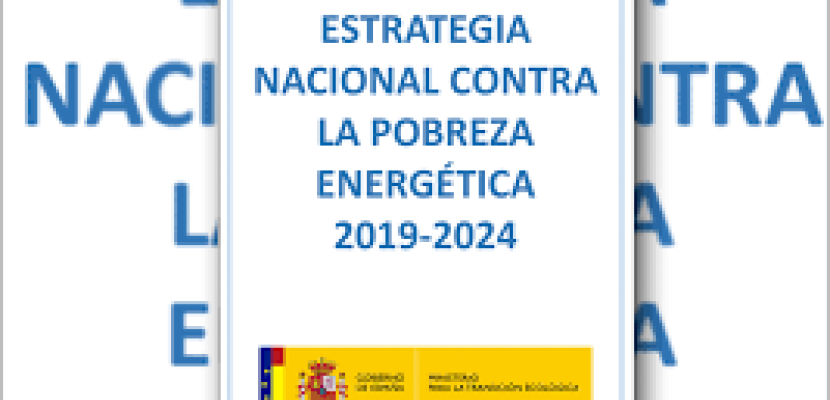Image

National Strategy against Energy Poverty 2019-2024 in Spain (ENPE)
Published on 11 August 2021

Spain
This is the good practice's implementation level. It can be national, regional or local.
About this good practice
In 2019, final energy prices suffered very significant increases as a result of the high prices of raw materials in international markets and the increase in the price of CO2 emission rights as a result of and anticipation of the decisions adopted in the EU. The Spanish government then published RDL 15/2018 of urgent measures for the energy transition characterised by decarbonisation and consumer protection, establishing the obligation to publish the National Strategy against Energy Poverty 2019-2024.
This Strategy:
• carries out a diagnosis and characterisation of energy poverty in which between 3.5 - 8.1 million people are detected in a situation of energy poverty in Spain.
• officially defines energy poverty for the first time.
• designs 4 measurement indicators proposed by the European Energy Poverty Observatory (EPOV) and adopted as main indicators for its monitoring in Spain.
• sets reduction targets for 2025: a 50% target and, at least, a 25% reduction.
• proposes 19 concrete measures to achieve the objectives, including its financing channels.
• prohibits the cutting of supply in extreme weather situations
This Strategy:
• carries out a diagnosis and characterisation of energy poverty in which between 3.5 - 8.1 million people are detected in a situation of energy poverty in Spain.
• officially defines energy poverty for the first time.
• designs 4 measurement indicators proposed by the European Energy Poverty Observatory (EPOV) and adopted as main indicators for its monitoring in Spain.
• sets reduction targets for 2025: a 50% target and, at least, a 25% reduction.
• proposes 19 concrete measures to achieve the objectives, including its financing channels.
• prohibits the cutting of supply in extreme weather situations
Resources needed
As this good practice is related to legislative changes, no financial resources were used. However, within the definition of the 19 concrete measures, financing channels are cited such as the ordinary budgets of the organisations involved.
Evidence of success
- inadequate temperature values in the home in winter (2018: 9.1%; 2019: 7.6%)
- late payment of housing utility bills (2018: 7,2%; 2019: 6,6%).
- the disproportionate spending indicator (2018: 16,9%; 2019: 16,7%).
- the hidden household poverty indicator (2018: 11%; 2019: 10,6%).
It is detected that energy poverty is more present in vulnerable groups (unemployed, first quintile income, old rented flats and unheated homes).
The results for the case of Andalusia show a reduction until 2019.
- late payment of housing utility bills (2018: 7,2%; 2019: 6,6%).
- the disproportionate spending indicator (2018: 16,9%; 2019: 16,7%).
- the hidden household poverty indicator (2018: 11%; 2019: 10,6%).
It is detected that energy poverty is more present in vulnerable groups (unemployed, first quintile income, old rented flats and unheated homes).
The results for the case of Andalusia show a reduction until 2019.
Potential for learning or transfer
Thanks to the SWOT analysis of the regions of the POWERTY project consortium, it has been detected that those regions that do not have such a strategy have difficulties in tackling energy poverty as they lack a definition, concrete measures and monitoring and evolution indicators. Therefore, this good practice is of interest to other regions and is eminently replicable.
Further information
Website
Good practice owner
You can contact the good practice owner below for more detailed information.
Organisation
Ministry for Ecological Transition and the Demographic Challenge of Spain (MITECO)

Spain
Comunidad de Madrid
Contact
Project Manager
